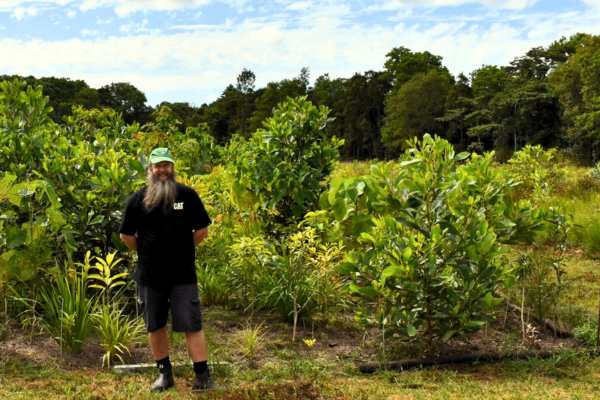Eagle detection for wind farms
Protected bird species are in the sights of this high-tech sensing technology in Tasmania.

Two wind farms in Tasmania have reported success in efforts to slash wedge-tailed eagle deaths using machine vision and artificial intelligence.
The technology, which shuts down turbines to protect birds, is said to have prevented all eagle strikes over an eighteen month period at Goldwind Australia’s Cattle Hill wind farm while energy generation fell by only about one percent.
The aerial monitoring and detection system, IdentiFlight, has been deployed at both Cattle Hill and Musselroe wind farms in Tasmania, as recently reported in RenewEconomy, delivering the functionality to detect, classify and analyse bird activity and then temporarily shut down the turbines for protected species.
The Cattle Hill wind farm is one of the earliest testing grounds outside of the US for the IdentiFlight system developed by Boulder Imaging.
Trials of the technology began in 2019, according to Goldwind Australia, which was a recipient of a Climate Council innovation award in 2021 for the IdentiFlight deployment. The company says the system was upgraded in 2023 to address blind spots revealed in the trial.
In June last year, Tasmania’s Musselroe Wind Farm also partnered with IdentiFlight to debut the latest version of its technology, IdentiFlight V5. Speaking at a recent energy conference, project owner Woolnorth Renewables said it had seen no eagle fatalities so far in the first year of operation, RenewEconomy reported.
IdentiFlight said these success stories in Tasmania are “proof that science-driven innovation can deliver measurable impact for both conservation and clean power production”.
"One of the key challenges we face is what’s known as the ‘green-green dilemma’, where initiatives designed to reduce environmental impact . . . can unintentionally harm other ecological values."
Wind turbines have long been criticised for causing bird deaths following collision with blades or towers. Researchers at the Massachusetts Institute of Technology say that while these incidents do occur, they make up only a small portion of overall bird fatalities compared to other human-related causes, such as collisions with buildings or predation by domestic cats.
Even so, they say, there is a growing commitment to designing wind farms that are safer for birds and avoiding placing them in ecologically sensitive zones with a range of mitigation approaches being studied.
The emergence of offshore wind farms has also raised alarm bells for ecologists concerned about their potential impact on sea-based wildlife.
Monash School of Biological Sciences research fellow Dr Mark Miller said that the most current Monash research had drawn on published data of the flight patterns of 119 seabird species to detail how high, how fast and at what time of day albatrosses, petrels, shearwaters and storm-petrels fly.
Closing the knowledge gap
“This will help scientists and policy makers better understand and mitigate the risks of these unique seabirds colliding with offshore wind turbines,” Dr Miller said.
He added, however, that additional research was needed to fill current knowledge gaps on seabird activity.
“One of these is that we currently have a poor understanding of seabird flight behaviour and how this might influence collision risks for iconic species such as albatrosses and petrels.”
Because a large number of seabirds are under threat of extinction, ecologists and the wind energy sector must collaborate to ensure the renewable transition benefits both people and wildlife, including seabirds, according to Monash School of Biological Science Associate Professor Rohan Clarke.
“One of the key challenges we face is what’s known as the ‘green-green dilemma’, where initiatives designed to reduce environmental impact . . . can unintentionally harm other ecological values,” he said.
“The energy transition isn’t optional, it’s essential, and finding solutions that support both climate goals and nature is critical.”
The IdentiFlight technology is made up of stereo and wide-field-of-view cameras, software, and neural network technologies that process images to determine 3D position, velocity, trajectory of protected species of interest such as wedge-tailed eagles. Boulder Imaging says its technology is unlike radar technology as it can detect and classify species in real time using a proprietary hybrid of machine vision and neural network technologies that allow users to specify which species of birds must be protected without sacrificing power generation.





